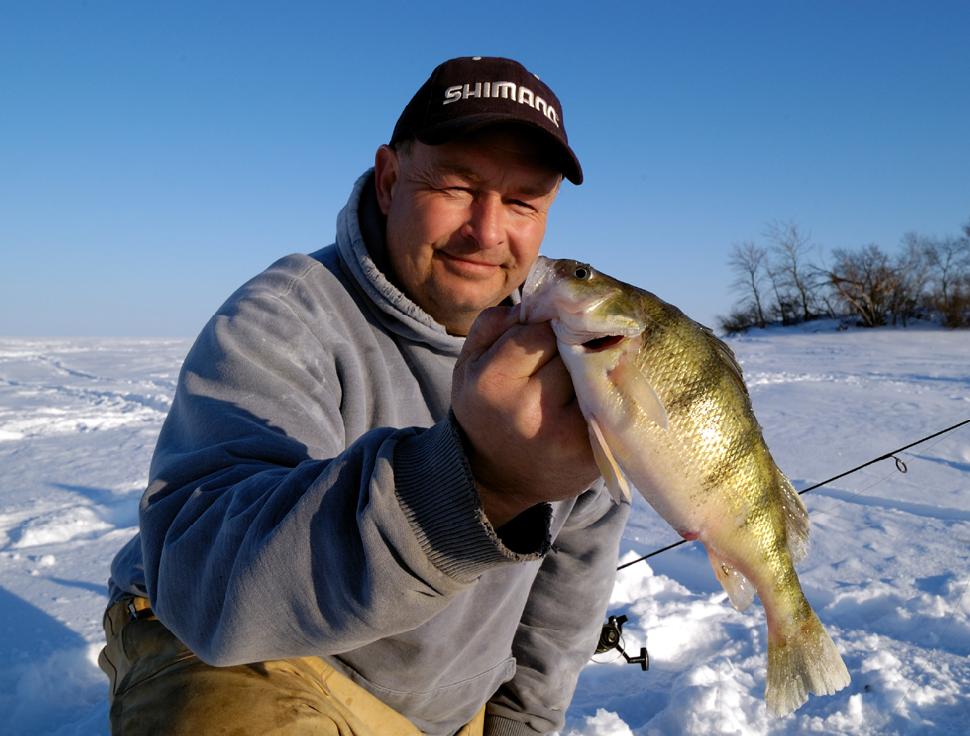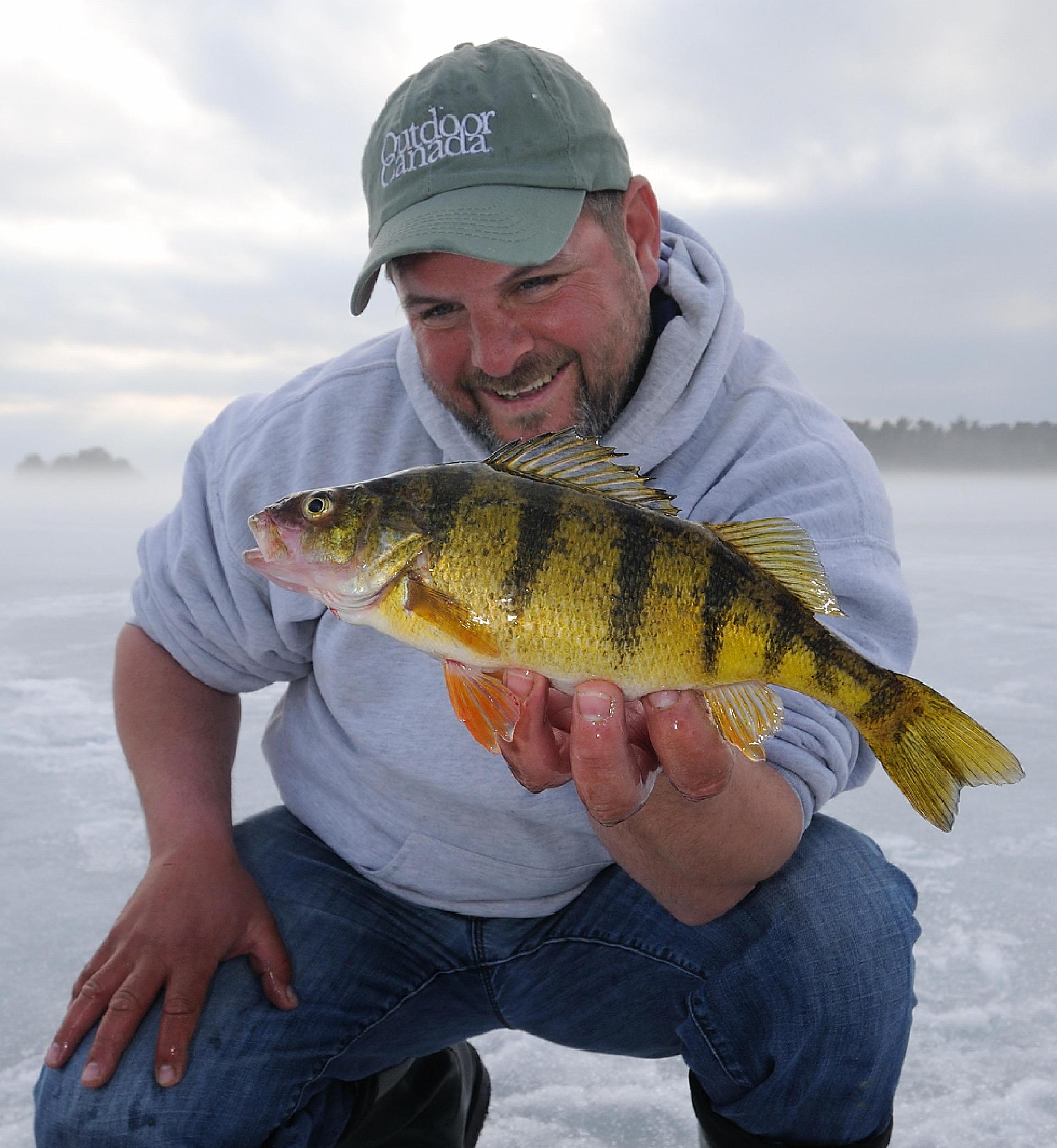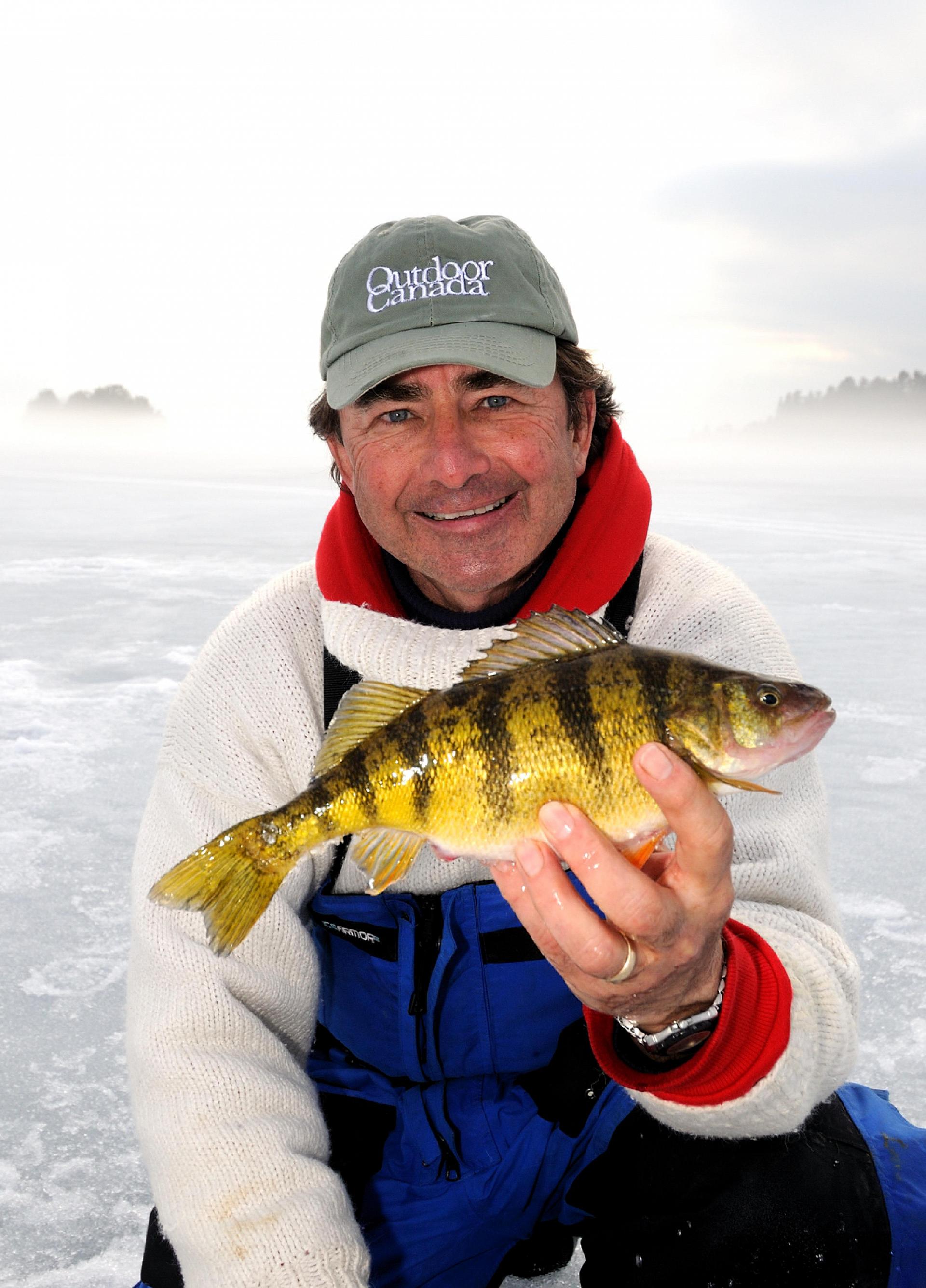Advertisement
Honest truth, I love getting letters and e-mails from readers for two reasons. First, it is a chance to discuss real fishing questions in real time. And secondly, I always reckon that if one person is facing a particular challenge, and takes the time to write in, that there are at least one hundred other folks facing the same issue.
In any event, the e-mail I received recently from Brad Williams in Alberta, about catching perch in the winter, is a super one.
Advertisement
Brad writes: Hi Gord, I’m an avid reader of the magazine and would really appreciate some insight on how barometric pressure affects fish activity, specifically perch and panfish during ice fishing season.
I live in Alberta, and fish northern natural lakes. I’ve noticed over the past several years that my best fishing seems to coincide with nice stable sunny days with high pressure systems, as opposed to overcast days with snow and low pressure systems. My best success seems to be when we have high pressure systems combined with a full moon cycle. On slow, low pressure could I get better results by moving to deeper water, closer to the basin? Should I try adjusting fishing locations and presentations, or do they just generally get lockjaw during these types of weather patterns?
I mostly fish shallow flats in 5 to 12 feet that held good weed growth during the fall. I often find the fish in these areas even during low pressure systems but can’t get them interested. Many times I see them on my camera—they come in for a look, and then just slowly swim away. Any advice or science you could offer would be most appreciated. Thank you for your time. Brad.
Advertisement
Wow, just reading Brad’s message tells me he is one heck of an ice angler. The way he has isolated the various parts of the problem and then, carefully considered the solutions is superb.
Advertisement
I am sure, too, that he is more than capable of solving his perch predicament on his own, but let’s see if I offer some help to speed up the process.
Like Brad, I also spend most of my ice fishing days on northern Canadian Shield-type lakes. They’re the predominate ones across the country, characterised usually by an abundance of hard structure. Things like long underwater points, humps, reefs, isolated rock piles and the like.
The reason I mention this is because on these types of lakes, some of the best perch fishing is found on and around these structures. But here is the key I’ve found for catching the fish in the winter. The best perch structures are usually associated with relatively large islands and mainland shorelines where the hard structure, say an underwater point, merges with the soft silty basin of the lake bottom. The immediate transition, where the hard structure merges with the soft bottom is a killer winter perch location on lakes like my home, Lake of the Woods.
Something else: like Brad, I’ve also found that the very best days for catching perch often coincide with high pressure systems. But here is the qualifier: I’ve found the best high pressure systems are the ones that bring warm, sunny, above normal temperature weather, versus the high pressure cells that bring bluebird skies and frigid, super cold temperatures.
So, when it is a “good” warm high pressure system, the hard/soft transitions I mentioned are often superb. But when it is a “not so good” super cold high pressure system, I find we do better on the much deeper, more isolated, main lake structures like sunken reefs and humps. And almost always, under these cold high front weather conditions, I find the perch on the very top, flattest part of the structure, and rarely along the sides.
So, Brad, if the lakes you fish offer these deeper type structures, by all means, check them out when the perch activity plummets. By the way, I rarely fish for perch in the winter ….. “on shallow flats in 5 to 12 feet that held good weed growth during the fall.” My best hard/soft transitions are usually in about 17 to 25 feet of water, whereas the deeper, main lake structures that we fish when the weather is frigid are typically 25 to 32 feet deep.
As a mater of fact, some of our best deep, main lake perch structures are also where we ice fish for walleyes. We tend to catch the perch during the sunny main part of the day and the walleyes at sunset.
But here is what I find the most fascinating. It is where Brad writes, “I often find the fish in these areas even during low pressure systems but can’t get them interested. Many times I see them on my camera—they come in for a look, and then just slowly swim away.”
Why I find this is so interesting is that the reason most anglers don’t catch fish is because there are no fish where they are fishing. That is not the case with Brad, though, because he can see them on his sonar and camera, so it means the problem is a presentation issue.
I am not going to go into the “easy bite” baits and techniques we use when the perch fishing is good. I’ll save that for another day. And, unfortunately, Brad doesn’t tell us what he is normally using for bait. But, when I know there are big perch in the area but they’re refusing to bite, here are my top two “go to” winter presentations.
First, there is something about using a tiny bead chain to separate your hook from your jig or spoon that turns on yellow perch. I am sure it has something to do with the ease and the way the hook pivots and floats effortlessly into a perch’s mouth, but lures like HT Enterprise’s Marmooska Tungsten Dancer are perch slayers. By the way, I normally remove the tiny #16 hook that comes with the jig, with the bead embedded on it, and use a similar size plain treble baited with a live maggot on each of the tiny tines.
Which brings us to the second “tough bite” perch presentation. It is one we call it the “tight-line-to-a-bobber technique” and it is deadly.
What you do is just barely lay a small jig tipped with a maggot or two on the bottom and set a tiny float just on, or even better, just under the surface to indicate when a perch picks it up. Now, jiggle the float nervously for a couple of seconds and let it set. When a perch takes the bait, you see the float tip up slightly and turn over onto its side.
I like using small #6 and #8 Marmooska tungsten jigs and I’ll tip them with one or two lively maggots. By the way, I’ve also discovered that a single Berkley Gulp! or Trigger X scented plastic maggot, or even better, a tiny pinched off piece of red wriggler coloured Gulp! or Trigger X mini-earthworm works almost as well.
Simply drop the jig down the hole and lay it on the bottom so that your line – delicate 3- and 4-pound test – is tight all the way up to the tiny bobber that is partially submerged just under the surface. When a perch inhales the jig, which resembles a succulent chironomid nymph, the bobber twitches, rises and then falls over onto its side.
The other thing I do, since you’re usually allowed to fish two lines in the winter, is to drill three holes very close together, say a foot or two apart. In the centre hole I place the transducer for my sonar unit so I can monitor both holes at the same time. In one of the other holes, I’ll jig the bead chain Dancer, while I set the tight-line-to-a-bobber rig in the third hole.
It is usually more than any self respecting yellow perch can resist!
Good ice fishing to you, Brad.



